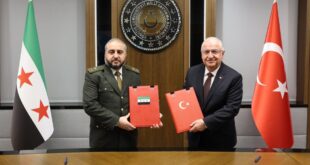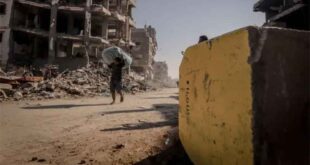 TEHRAN (FNA)- As Burton Richter, an American Nobel laureate in physics, entered the main auditorium of Tehran’s prestigious Sharif University, hundreds of students rose to give him a loud and lengthy ovation. But Richter, wearing a white suit and leaning on a cane, said he was the one who should be awed.
TEHRAN (FNA)- As Burton Richter, an American Nobel laureate in physics, entered the main auditorium of Tehran’s prestigious Sharif University, hundreds of students rose to give him a loud and lengthy ovation. But Richter, wearing a white suit and leaning on a cane, said he was the one who should be awed.
“The students here are very impressive,” Richter said, lauding the high level of education at Sharif. “I expect to hear a lot more from you all in the future.” The students, young men and women with laptops and smart briefcases, giggled in their seats. A woman took pictures of the Stanford professor emeritus, whose visit last month was part of a privately funded academic program run by the National Academies of the United States and universities in Iran.
“Mr. Richter is an example for us,” explained Ismael Hosseini, a 23-year-old electrical engineering student who had managed to get a seat near the stage. “But soon I will be able to listen to an Iranian scientist who has received a Nobel Prize for his or her work,” he said. “We are all studying and researching hard to receive this honor.”
Iran’s determination to develop its nuclear energy program is part of a broader effort to promote technological self-sufficiency and to see Iran recognized as one of the world’s most advanced nations. The country’s leaders, who three decades ago wrested the government away from a ruler overly dependent on the West, invest heavily in scientific and industrial achievement.
Still, Iranian scientists claim breakthroughs in nanotechnology, biological researchers are pushing the boundaries of stem cell research and the country’s car industry produces more cars than anywhere else in the region.
“Iran wants to join the group of countries that want to know about the biggest things, like space,” Richter said to the students during his speech at Sharif University, which draws many of the country’s best students. Every year, 1.5 million young Iranians take a national university entrance exam, or “Koncour.” Of the 500,000 who pass and are entitled to free higher education, only the top 800 can attend Sharif, considered Iran’s MIT.
At Sharif, students work in fields including aerospace and nanotechnology. While some end up advancing Iran’s nuclear program or finding work in other technological fields in Iran, many, especially PhD candidates, are lured by employers or universities in Australia, Canada, and the United States.
“Our visitors are flabbergasted when they come to our modern laboratories and see women PhD students. Often they had a completely different image of Iran, not as an academic country,” said Abdolhassan Vafai, a professor at Sharif. “Here, we educate our students to solve problems that affect all humanity, like hunger, global warming, and water shortages.”
Progress and inventions are widely deemed as proof that Iran’s 1979 revolution has made it independent and self-sufficient.
When President Mahmud Ahmadinejad opened Iran’s first space center in February, he issued a launch order sending a test missile into space and proclaimed that “no power can overcome Iran’s will.”
Iran hopes to launch its second satellite – the first was launched commercially by a Russian company – within weeks, using a locally made rocket.
Iran’s supreme leader, Ayatollah Ali Khamenei, has always encouraged scientific breakthroughs. “If you are in pursuit of a science, you bring dissatisfaction and displeasure to the enemy of the revolution’s aspirations,” Khamenei said during a visit to Iran’s stem cell research center in 2006.
In 1979, revolutionaries accused Shah Mohammad Reza Pahlavi, the country’s US-backed autocrat, of having made Iran dependent on other states for technology, military equipment, and industrial hardware.
During the Iran-Iraq war of the 1980s, the country faced an enemy supported by superpowers that isolated Iran. Squadrons of US-made F-4 fighter jets were grounded because of US sanctions that barred Iran’s access to spare parts.
“In the war, the whole world was against us. We learned that we had to stand on our own two feet,” said Manouchehr Manteqi, chief executive of Iran’s largest carmaker, Iran Khodro. The state-run company produced more than 600,000 cars in 2007 and has no equivalent in the Middle East. India’s Tata Motors produced just over 400,000 vehicles in 2007; French automaker Peugeot Citroen – with which Iran Khodro has a joint venture – makes about 3.5 million vehicles a year worldwide.
“The sanctions forced us to use our full potential. We are now commercializing what we learned back then,” explained Manteqi, who wore a worker’s coat to show unity with his assembly-line colleagues during an interview in March.
Iranians are not much worried about the impact of UN sanctions against Iran over its nuclear program. “They will lead to limitations in our cooperation with other countries,” Manteqi said. “But they also mean that others cannot use Iran’s potential, like foreign carmakers we want to cooperate with. Iran needs 1.5 million cars a year – this is an interesting market. Under sanctions, we might have to do things ourselves, but we are used to that.”
“If the West refuses Iran nuclear technology, it means they might pressure us in the future over development of other technologies,” said Nasser Aghdami of the Royan stem cell institute in Tehran. The state-sponsored facility does research on human embryonic stem cells. “Our religious authorities have decided that we can do research on fetuses until 4 months old,” he explained.
“We exchange information with scientists in the US. I feel science should be above politics,” Aghdami said.
But when he wanted to order a new ultracentrifuge machine needed for research, he found that his foreign counterparts weren’t allowed to send the equipment to Iran because it was considered “dual use” – technology that could be applied to Iran’s nuclear program. The nuclear centrifuges that Iran produces cannot be used for stem cell research.
“This shows that we still need a lot of willpower to achieve our goal,” Aghdami said. Iranian stem cell scientists are already involved in efforts to reprogram skin cells into embryonic cells in order to bypass ethical problems, he said. “Only three other countries – Germany, the US and Japan – are involved in this. We are proud to compete with the best.”
Persia, as Iran was known until the 19th century, made discoveries in the natural sciences, mathematics and philosophy. After entrance of Islam in Iran in the 7th century, Persian scientists developed medical alcohol and made important contributions in algebra and chemistry.
“Everybody wants his/her kids to study here. Step into a taxi in Tehran and the driver will tell you this is his second job to support his kids in university,” said Hashem Rafii-Tabar, a professor at a research institute in Tehran. He returned to his homeland six years ago to set up a department for nanotechnology for a consortium of nine Iranian universities. His students are making conceptual designs for nanodevices that can identify and destroy individual cancer cells.
“We have high ambitions,” Rafii-Tabar explained. “Already we are the number one in nanotechnology in the region, maybe only equaled by Israel. Iran produces more papers on this subject in international scientific indexed publications than any other country in the region. However, Iran has not yet submitted patents, official new inventions. Its regional competitors have also not reached this stage.”
The Iranian government supports the nanotechnology project. Last month a nanotechnology supercomputing center was opened, financed by the government.
At Iran Khodro’s factory west of Tehran, the day shift had just ended. But Manteqi, the CEO, was not leaving. “I should work harder than everyone else, because many things still go wrong,” he explained with a smile. “As the late Imam Khomeini said, ‘If we want it, we can do it.’ We have more experts and professionals in Iran than in any of the neighboring countries. If they are managed properly, we can fulfill our ambitions. Iran can do this in cooperation with the rest of the world, but, if needed, we can also do it by ourselves.”
 Eurasia Press & News
Eurasia Press & News



